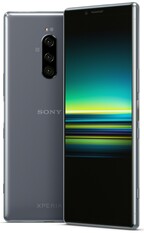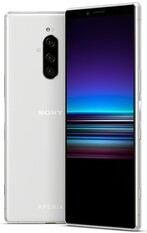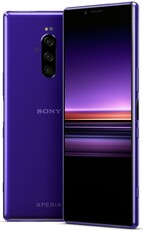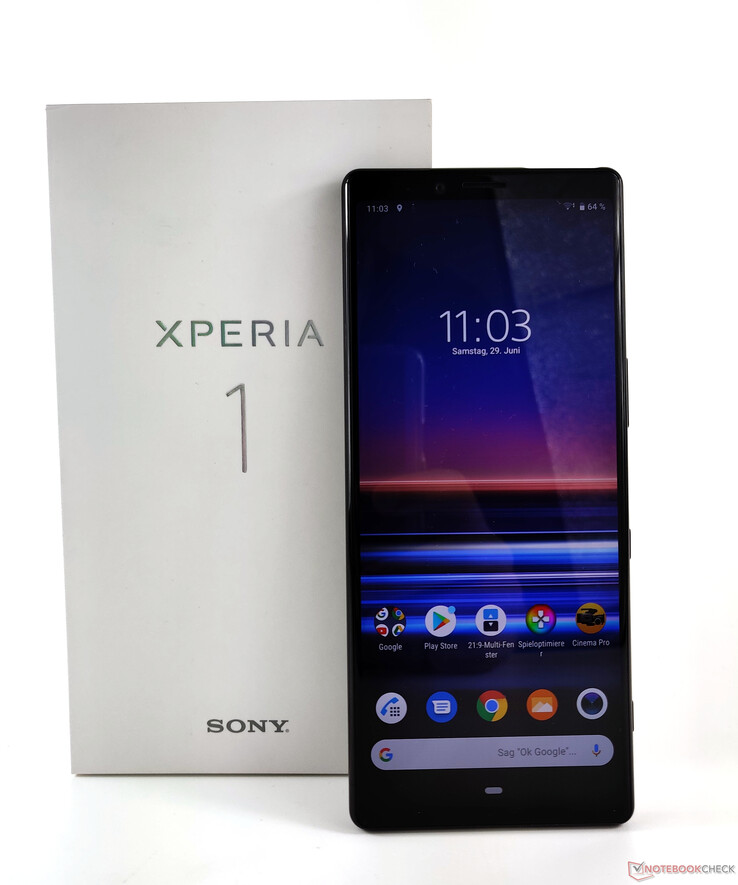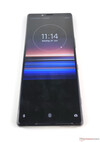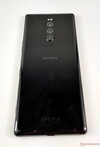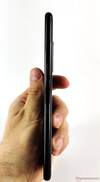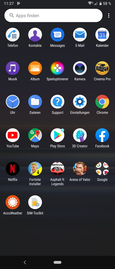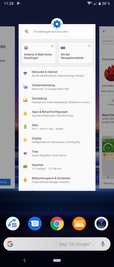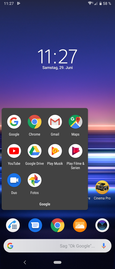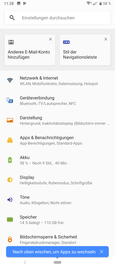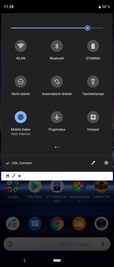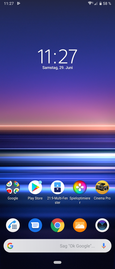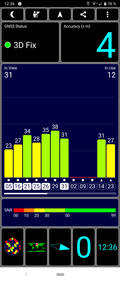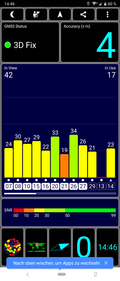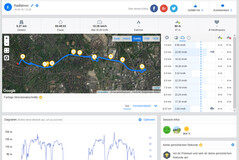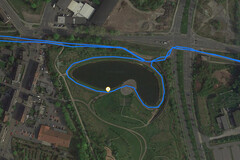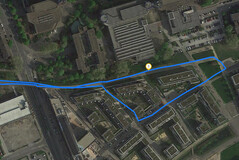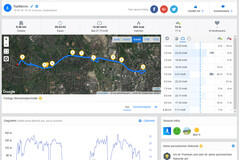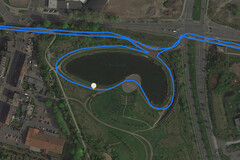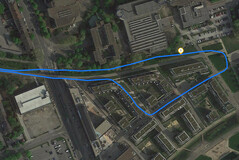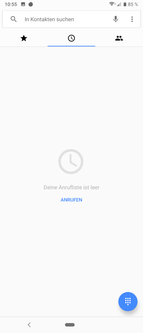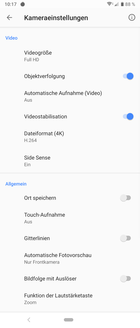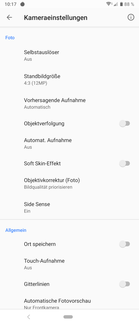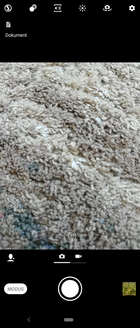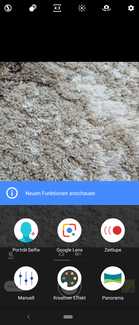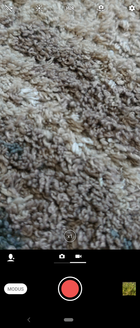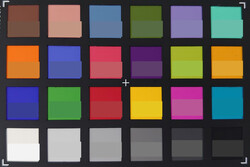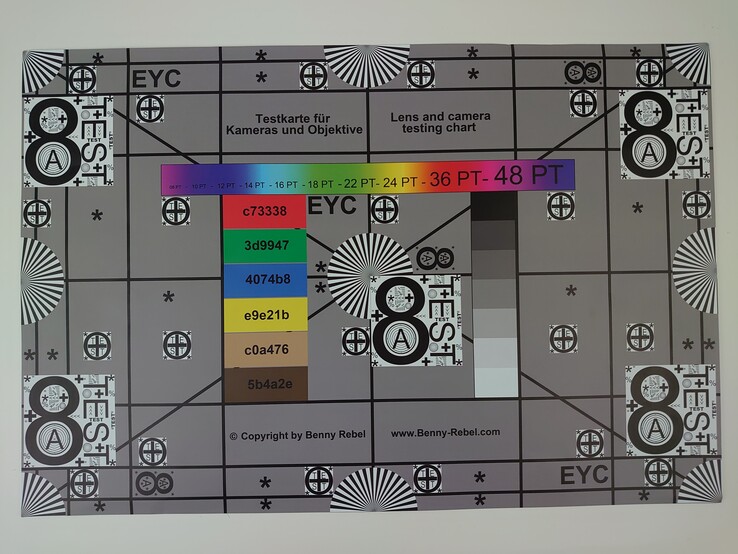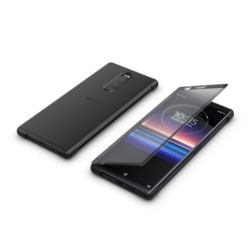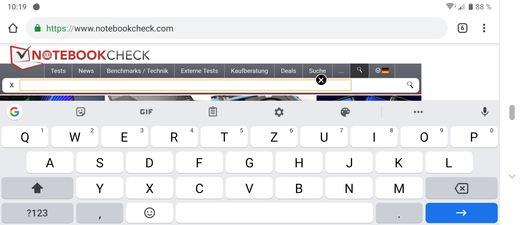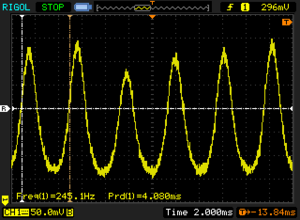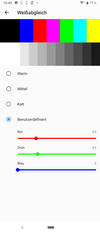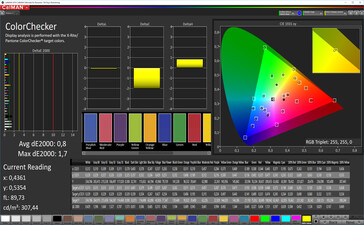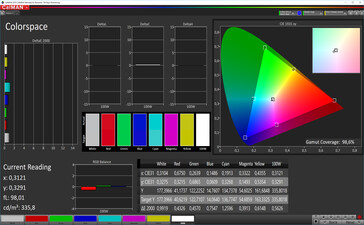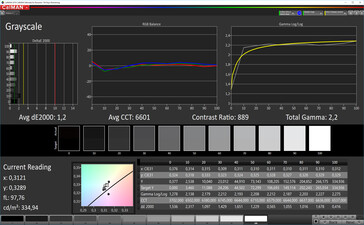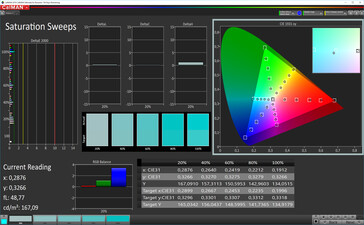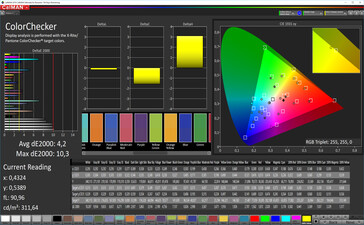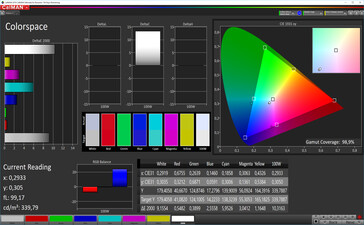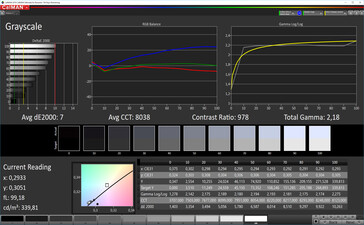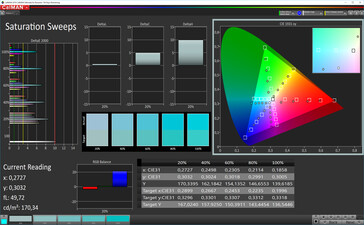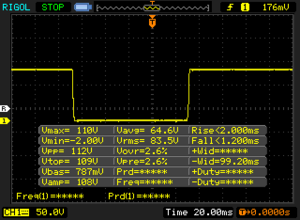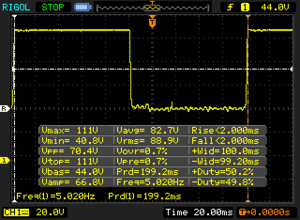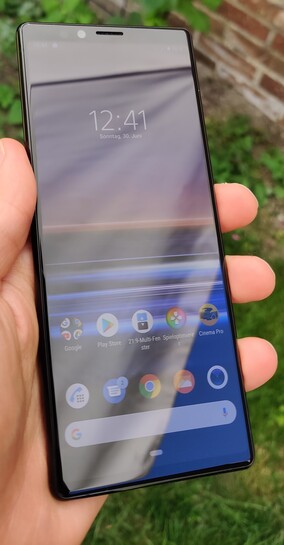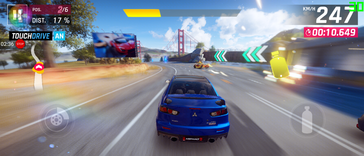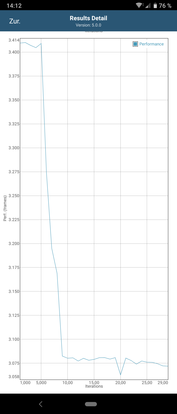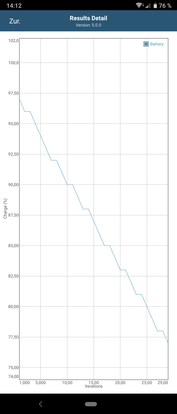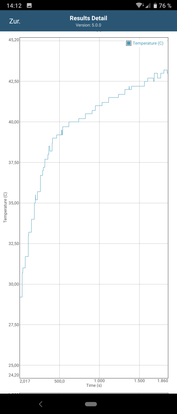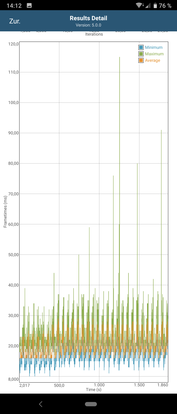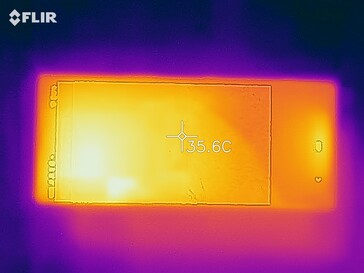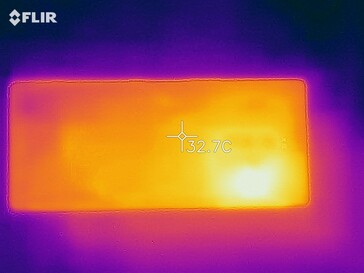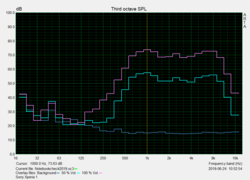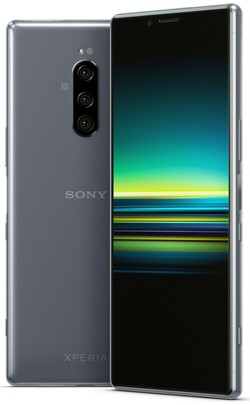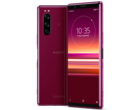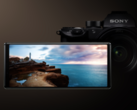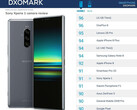Sony Xperia 1 Smartphone Review: It takes more than just a fancy display to challenge established flagships
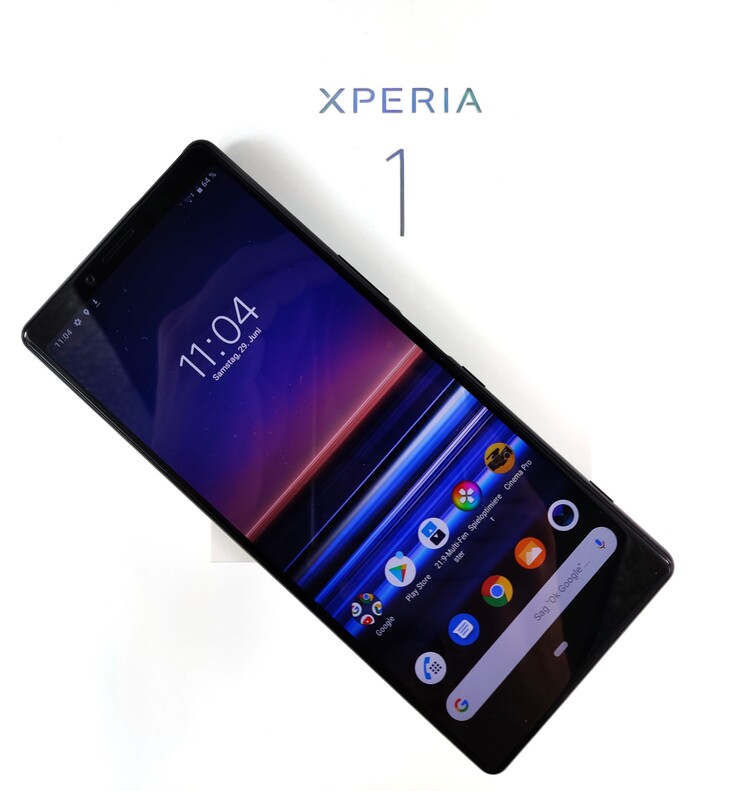
The Mobile World Congress 2019 in Barcelona saw Sony introduce its new flagship Xperia smartphone, the Xperia 1. The device has a 21:9 display just like the midrange Xperia 10 series, which Sony calls CinemaWide on account of feature-length films often being filmed in this aspect ratio. The display in the Xperia 1 is also an OLED panel and runs natively at 3840x1644. It supports HDR too and is not interrupted by any notches or punch-holes like the displays of many modern flagships are. The trade-off to having no notch or punch hole is bezels, although these are pleasantly narrow.
Sony equips the Xperia 1 with a Qualcomm Snapdragon 855 SoC, 6 GB of RAM and 128 GB UFS 2.1 flash storage. All are staples of flagships released in 2019, as are triple rear-facing cameras. Sony has opted for three 12 MP sensors on the Xperia 1, with its main f/1.6 aperture sensor supported by a super wide-angle sensor, along with a telephoto lens that supports up to 2x optical zoom.
The Xperia 1 currently retails for an eye-watering 949 Euros (~US$1,071), which puts it in the firing line of the Huawei P30 Pro, OnePlus 7 Pro and Samsung Galaxy S10+. We shall also consider the Xperia 1 against the Xiaomi Mi 9, a considerably more affordable alternative to our other comparison devices.
Case
Sony has covered the Xperia 1 in Corning Gorilla Glass 6 and currently offers the device in black, grey and white. The device has a minimalist design in our opinion, with the 6.5-inch display bordered by narrow bezels. However, the inclusion of a top bezel reduces its screen-to-body ratio to just 82%, which is rather low by today’s standards. The OnePlus 7 Pro, for instance, pushes over 88%.
The Xperia 1 is surprisingly light at 178 g, while its 21:9 aspect ratio display allows it to be narrower than all our comparison devices too. It is just over 0.6 mm thicker than most at 8.2 mm though, but this does not stop it from feeling good in the hand.
Sony has done a good job of placing the physical buttons, with all being easily accessible and well-finished. The dedicated camera button is in an awkward position if you try to press it with the phone in portrait mode. However, it doubles as a shutter button, which is generally found towards the outer edges of a traditional camera or DLSR.
Our review unit is well-built too, although the middle back of the case feels hollow. Sony has returned to using side-mounted fingerprint sensors, having briefly switched to rear-mounted ones for the XZ2 Premium and XZ3. The side-mounted fingerprint sensor means that the device cannot sit firmly on a flat surface like a table. A minor gripe, admittedly.
The Xperia 1 is IP65 and 68-certified against the ingress of dust and water too. We would recommend against placing the device in a saline solution or chlorinated water though.
Connectivity
The Xperia 1 has stereo speakers, dual SIM connectivity, a notification LED, and an always-on display (AoD). Sony has included an RGB-IR sensor too, which supposedly analyses ambient light and helps optimise the white balance of the display.
The device supports Miracast too, which worked perfectly with a Sony Android TV during our tests. Sony has also certified the Xperia 1 for Widevine DRM Level 1, meaning that it can stream DRM-protected content from services like Amazon Prime and Netflix in HD.
The Xperia 1 has a USB Type-C port like all modern smartphones. Most operate on the older USB 2.0 standard though, with Sony opting for a new USB 3.1 connection instead. The port supports USB On-The-Go (OTG), which means that you can connect external peripherals like keyboards and USB sticks. USB 3.1 also provides excellent transfer speeds.
As we mentioned earlier, the Xperia 1 has 128 GB of UFS 2.1 flash storage, of which around 105 GB is free upon delivery. You can add up to 512-GB microSD cards should you need more storage, with the device able to read all modern file systems including exFAT. We were unable to format any microSD card as internal storage though, restricting apps and data to just the 105 GB of built-in free space.
Software
The Xperia 1 ships with Android 9.0 Pie, atop of which Sony adds its Sony UI. You would be forgiven for thinking that the device runs stock Android though as Sony has kept changes to a minimum. Bloatware is scarce, with Sony only adding a few apps like in-house camera, music, and support apps, among others. These cannot be uninstalled, although you can disable them.
The only notable inclusion is Side Sense, which allows you to launch applications by tapping the sides of the display. You can activate various other functions too.
Incidentally, Sony had pushed out the June 2019 security patch to our review unit when we received it. This was the most up to date patch at the time of testing.
Communication & GPS
The Xperia 1 supports LTE Cat.19 for both nano-SIM card slots, theoretically allowing it to achieve up to 1.6 GB/s download speeds. The device can also access 24 LTE bands, including the increasingly more frequently used Band 28, so there is nothing to complain about here. Likewise, the device supports Bluetooth 5.0 and has an NFC chip, so it will work with services like Google Pay.
The Xperia 1 supports all modern Wi-Fi standards up to 802.11ac and has a MIMO antenna that helps it achieve fast transfer speeds. Our iperf3 Client Wi-Fi tests with our Linksys EA8500 router underline this, with our review unit averaging over 500 Mb/s in both tests. However, it simultaneously has underwhelming reception, with the device only able to manage an attenuation of -52 dBm when placed next to our Telekom Speedport W921V router.
| Networking | |
| iperf3 transmit AX12 | |
| Huawei P30 Pro | |
| Huawei P30 Pro | |
| Xiaomi Mi 9 | |
| Sony Xperia 1 | |
| OnePlus 7 Pro | |
| Samsung Galaxy S10 Plus | |
| iperf3 receive AX12 | |
| Huawei P30 Pro | |
| Huawei P30 Pro | |
| Xiaomi Mi 9 | |
| Samsung Galaxy S10 Plus | |
| Sony Xperia 1 | |
| OnePlus 7 Pro | |
The Xperia 1 uses BeiDou, Galileo, GLONASS and GPS for location services, which helps it achieve a satellite fix with up to four metres accuracy. This applies indoors and outdoors, which is impressive. Our review unit even managed to locate us quickly indoors to our surprise.
We also took the Xperia 1 on a bike ride to compare its location accuracy against our reference bike computer, the Garmin Edge 500. Only 10 metres separated the Xperia 1 from the Garmin after over 9 km, underlining just how accurate the former is. Our review unit still took some questionable detours though. However, you should have no issues with using the Xperia 1 for all general navigation tasks.
Telephone Features & Call Quality
The phone app looks and functions just like the one you would find on Pixel smartphones, except that its three tabs are at the top, rather than the bottom, of the screen. Our review unit has decent, if unremarkable, call quality. Voices sounded clear at both ends of the call, and we experienced no disturbing reception dropouts during our tests. The Xperia 1 supports Wi-Fi calls (VoWiFi) too; we could not find an option for enabling voice over LTE (VoLTE). Please keep in mind that Wi-Fi calls will only work if your carrier has provisioned the Xperia 1. The functionality will not work on all networks out of the box.
Video calls also worked well, which we confirmed by using Skype with the front-facing camera. The speaker reproduced our partner’s voice clearly, although we could occasionally hear our voice echoing in the background.
Cameras
As we mentioned at the start of this review, Sony has equipped the Xperia 1 with three 12 MP rear-facing cameras. The main sensor has an f/1.6 aperture, a 78° field of view (FOV) and a 26 mm focal length. Second up is the wide-angle sensor, with its f/2.4 aperture, 135° FOV and 26 mm focal length. Sony has also included a telephoto lens, which has an f/2.4 aperture too, along with a 45° FOV and a 52 mm focal length. Incidentally, the main and telephoto sensors are optically stabilised (OIS).
Sony has paid special attention to the video capabilities of the Xperia 1, allowing it to record in up to 3840x1644 in a 21:9 aspect ratio. The standard rear-facing camera can also shoot in up to 1080p at 960 FPS for slow-motion effect. Sony has preinstalled a dedicated Cinema Pro app to, which contains various settings for manually adjusting colour depth, aperture and focus among others.
The main sensor is the in-house IMX445, which has 1.4 μm sized pixels. Theoretically, the IMX445 should take good photos in low light, but the Xperia 1 cannot compete with the IMX586 in the Honor View 20, for example, as demonstrated below by scene 3. In short, low-light photos are comparatively underexposed, lack detail and they are dominated by image noise.
Predictably, the IMX445 performs better in daylight, with our review unit capturing some impressive and detailed test shots. The sensor shows its shortcomings even here though, with image dynamics and exposure levels falling short of the cameras in other 2019 flagships. The IMX445 generally reproduces colours too warmly for our liking too.
Sony promotes that the telephoto lens supports 2x optical zoom, but it does so with less detail and worse exposure than the IMX445 can. Likewise, the wide-angle sensor has weaker dynamics and captures less detail too, while our tests shots have a fish-eye look to them, as demonstrated below by the picture of the brick wall.
Sony has gone with a Samsung sensor rather than an in-house one for the front-facing camera. The 8 MP sensor has an f/2.0 aperture and delivers mixed results. Image quality is worse than any of the rear-facing sensors, and our test photos look underexposed with washed-out colours even with the HDR mode enabled. Incidentally, the front-facing camera can shoot videos in up to 1080p at 30 FPS. Videos look about as good as photos do too.
Please note: We shall shortly be publishing an article comparing the cameras of current flagship smartphones, of which the Xperia 1 will be one of our test devices. We will also be comparing the OnePlus 7 Pro, Galaxy S10+ and P30 Pro.
We also subjected our review unit to additional camera tests under controlled lighting conditions. The main sensor reproduces colours well compared to ColorChecker Passport reference colours, although it has trouble with black and green tones. Its white balance is too warm, which impacts some of its colour accuracy.
The sensor does a good job of capturing our test chart too, in daylight, that is. Fine lines and structures are visible, but dark fonts on colour backgrounds look frayed. Hardly any of the chart is visible in low light though.
Accessories & Warranty
The Xperia 1 comes with the standard set of accessories for a 2019 flagship. Sony includes a USB cable, a 3.5 mm jack to Type-C adapter and a modular charger (3 A/5 V).
The company also sells a case, which it calls the Style Cover Touch SCTI30. The case has a transparent front panel that allows you to make calls and even use the device with the cover closed. Sony sells other generic accessories like its Open-ear SBH82D headphones too.
The Xperia 1 comes with a 24-month limited manufacturer’s warranty. Please see our Guarantees, Return Policies & Warranties FAQ for country-specific information.
Input Devices & Operation
Sony preinstalls Google Gboard as the default keyboard, which works just as well as it has on other devices that we have reviewed. The Xperia 1 also comes with the same gesture controls that we have seen on Pixel smartphones like the Pixel 3a XL. You can switch to traditional navigation buttons should you prefer though.
The capacitive touchscreen in our review unit is very sensitive and responds accurately, even into the corners of the display. The Gorilla glass protective surface has a pleasantly smooth finish too.
Sony has also included its Side-Sense functionality, which still works well, as does the Xperia 1’s side-mounted fingerprint sensor. It is not the fastest that we have encountered, but it reliably recognised our registered fingers during our tests. The Xperia 1 does not support biometric face unlock like FaceID, but you could use a less secure 2D alternative if you want to unlock your device using your face.
Display
The highlight of the Xperia 1 is its 6.5-inch OLED display, which as we mentioned earlier is also 4K. Strictly speaking, this is not the case as it only operates at 3840x1644, but this still results in a pixel density of over 600 PPI. Hence, you should not notice any pixels even if you have better than 20/20 vision. The Xperia 1 is HDR10-certified, which should appeal to all the movie lovers out there.
The maximum brightness of the display is a bit too low to take advantage of its HDR10 certification though, as it only reaches an average maximum luminosity of 543 cd/m² according to X-Rite i1Pro 2. By contrast, our comparison devices get between 8% and 33% brighter than our review unit. Switching to manual brightness drops the maximum luminosity to just 340 cd/m² too. The more practical APL50 test measures a maximum brightness of 640 cd/m² though, which is more respectable. Moreover, the display is 99% evenly lit, which is a class-leading result.
It is worth keeping in mind that it is tricky to get AMOLED pixels to radiate at their maximum luminosity, so you may achieve higher values if you shine an ultra-bright light on the display. AMOLED panels do not have integrated backlights like their IPS or TN counterparts too, which comes with its advantages and drawbacks. We shall cover the former in the next paragraph. Starting with the latter, OLED panels use pulse-width modulation (PWM) to change brightness, which can look like flickering to human eyes. This flickering can cause health issues like eye strain and headaches for some people. The screen in our review unit flickers at 241.5 Hz when set to 99% brightness and below, although we noticed it flickering at around 121.4 Hz when at maximum brightness too. Both are low enough to cause issues for those who are PWM sensitive.
| |||||||||||||||||||||||||
Brightness Distribution: 99 %
Center on Battery: 541 cd/m²
Contrast: ∞:1 (Black: 0 cd/m²)
ΔE ColorChecker Calman: 0.8 | ∀{0.5-29.43 Ø4.77}
ΔE Greyscale Calman: 1.2 | ∀{0.09-98 Ø5}
100% sRGB (Calman 2D)
Gamma: 2.2
CCT: 6601 K
| Sony Xperia 1 OLED, 3840x1644, 6.5" | Samsung Galaxy S10 Plus OLED, 3040x1440, 6.4" | Huawei P30 Pro OLED, 2340x1080, 6.5" | OnePlus 7 Pro AMOLED, 3120x1440, 6.7" | Xiaomi Mi 9 AMOLED, 2340x1080, 6.4" | |
|---|---|---|---|---|---|
| Screen | -139% | -51% | -25% | -7% | |
| Brightness middle (cd/m²) | 541 | 710 31% | 597 10% | 586 8% | 593 10% |
| Brightness (cd/m²) | 543 | 721 33% | 608 12% | 584 8% | 587 8% |
| Brightness Distribution (%) | 99 | 97 -2% | 89 -10% | 97 -2% | 94 -5% |
| Black Level * (cd/m²) | |||||
| Colorchecker dE 2000 * | 0.8 | 3.7 -363% | 2.2 -175% | 1.39 -74% | 0.9 -13% |
| Colorchecker dE 2000 max. * | 1.7 | 10.3 -506% | 3.6 -112% | 2.7 -59% | 2 -18% |
| Greyscale dE 2000 * | 1.2 | 1.5 -25% | 1.6 -33% | 1.6 -33% | 1.5 -25% |
| Gamma | 2.2 100% | 2.1 105% | 2.23 99% | 2.243 98% | 2.27 97% |
| CCT | 6601 98% | 6611 98% | 6268 104% | 6672 97% | 6548 99% |
* ... smaller is better
Screen Flickering / PWM (Pulse-Width Modulation)
| Screen flickering / PWM detected | 245.1 Hz | ≤ 99 % brightness setting | |
The display backlight flickers at 245.1 Hz (worst case, e.g., utilizing PWM) Flickering detected at a brightness setting of 99 % and below. There should be no flickering or PWM above this brightness setting. The frequency of 245.1 Hz is relatively low, so sensitive users will likely notice flickering and experience eyestrain at the stated brightness setting and below. In comparison: 53 % of all tested devices do not use PWM to dim the display. If PWM was detected, an average of 8081 (minimum: 5 - maximum: 343500) Hz was measured. | |||
The positive aspect of having no backlight is that it allows AMOLED panels to individually switch off pixels, theoretically giving them 0 cd/m² black values and infinite contrast ratios. This makes colours look more vivid than they would on IPS or TN panels.
Correspondingly, CalMAN certifies the display as being impressively colour accurate, with low sRGB DeltaE deviations even by flagship smartphone standards. The display should even support BT.2020 HDR when set to Creator mode too and achieves an almost ideal colour temperature when set to our customised colour settings. We cannot notice any colour tints either.
Display Response Times
| ↔ Response Time Black to White | ||
|---|---|---|
| 3.2 ms ... rise ↗ and fall ↘ combined | ↗ 2 ms rise | |
| ↘ 1.2 ms fall | ||
| The screen shows very fast response rates in our tests and should be very well suited for fast-paced gaming. In comparison, all tested devices range from 0.1 (minimum) to 240 (maximum) ms. » 14 % of all devices are better. This means that the measured response time is better than the average of all tested devices (20.2 ms). | ||
| ↔ Response Time 50% Grey to 80% Grey | ||
| 4 ms ... rise ↗ and fall ↘ combined | ↗ 2 ms rise | |
| ↘ 2 ms fall | ||
| The screen shows very fast response rates in our tests and should be very well suited for fast-paced gaming. In comparison, all tested devices range from 0.165 (minimum) to 636 (maximum) ms. » 14 % of all devices are better. This means that the measured response time is better than the average of all tested devices (31.6 ms). | ||
The Xperia 1 is easy to use outdoors thanks to its contrast-rich AMOLED display. Our review unit gets bright enough for most lights, but its highly reflective display makes it tricky to read content under bright sunlight. Incidentally, devices like the Galaxy S10+ get noticeably brighter than the Xperia 1.
Performance
The Xperia 1 comes with a Qualcomm Snapdragon 855 SoC, the chipset of choice for most Android OEMs this year. The Snapdragon 855 integrates four ARM Cortex-A76 cores with one assigned as a faster "prime-core" that can reach up to 2.84 GHz, while the other three peak at 2.42 GHz. The SoC also has four ARM Cortex-A55 cores that have a maximum clock speed of 1.8 GHz, and a Qualcomm Adreno 640 GPU.
Our review unit performs well in synthetic benchmarks. However, the Xperia 1 generally falls short of the OnePlus 7 Pro and Mi 9 because of its higher resolution display, meaning that the same SoC must render more pixels on the Xperia 1 than it does on those other two devices.
The Xperia 1 is on par with the Galaxy S10+ and its Exynos 9820 SoC though, as it is in GPU benchmarks like GFXBench. The device suffers in off-screen benchmarks though, which is probably because of thermal throttling. 3DMark scores fluctuate by between 20 and 30%, for example, but we will cover this in greater depth in the Emissions section of this review.
Our review unit performs well in daily use too, despite its huge 4K display. 6 GB of RAM is comparatively low these days, but we did not notice any aggressive RAM management during our tests or slowdowns.
| PCMark for Android | |
| Work performance score (sort by value) | |
| Sony Xperia 1 | |
| Samsung Galaxy S10 Plus | |
| Huawei P30 Pro | |
| OnePlus 7 Pro | |
| Xiaomi Mi 9 | |
| Average Qualcomm Snapdragon 855 (10330 - 14439, n=19) | |
| Work 2.0 performance score (sort by value) | |
| Sony Xperia 1 | |
| Samsung Galaxy S10 Plus | |
| Huawei P30 Pro | |
| OnePlus 7 Pro | |
| Xiaomi Mi 9 | |
| Average Qualcomm Snapdragon 855 (8342 - 11440, n=19) | |
| GFXBench 3.1 | |
| on screen Manhattan ES 3.1 Onscreen (sort by value) | |
| Sony Xperia 1 | |
| Samsung Galaxy S10 Plus | |
| Huawei P30 Pro | |
| OnePlus 7 Pro | |
| Xiaomi Mi 9 | |
| Average Qualcomm Snapdragon 855 (27 - 58, n=20) | |
| Average of class Smartphone (11 - 166, n=155, last 2 years) | |
| 1920x1080 Manhattan ES 3.1 Offscreen (sort by value) | |
| Sony Xperia 1 | |
| Samsung Galaxy S10 Plus | |
| Huawei P30 Pro | |
| OnePlus 7 Pro | |
| Xiaomi Mi 9 | |
| Average Qualcomm Snapdragon 855 (35 - 71, n=20) | |
| Average of class Smartphone (8.4 - 413, n=154, last 2 years) | |
| AnTuTu v7 - Total Score (sort by value) | |
| Sony Xperia 1 | |
| Samsung Galaxy S10 Plus | |
| Huawei P30 Pro | |
| OnePlus 7 Pro | |
| Xiaomi Mi 9 | |
| Average Qualcomm Snapdragon 855 (217967 - 398720, n=16) | |
Expectedly, the Xperia 1 is competitive in browser benchmarks too, although it generally languishes in a tightly packed midfield. Websites load quickly on the preinstalled Google Chrome browser as does media content. In short, you shouldn't experience any slowdowns in daily use.
| Jetstream 2 - 2.0 Total Score | |
| Average of class Smartphone (23.8 - 387, n=147, last 2 years) | |
| OnePlus 7 Pro (Chrome 74) | |
| Huawei P30 Pro (Chrome 73) | |
| Sony Xperia 1 (Chrome 75) | |
| Average Qualcomm Snapdragon 855 (45.5 - 67, n=16) | |
| Xiaomi Mi 9 (Chrome 73) | |
| Samsung Galaxy S10 Plus (Samung Browser 9.0) | |
| Speedometer 2.0 - Result 2.0 | |
| Average of class Smartphone (15.2 - 643, n=119, last 2 years) | |
| Huawei P30 Pro (Chrome 73) | |
| Xiaomi Mi 9 (Chrome 73.0.3683.75) | |
| Sony Xperia 1 (Chrome 75) | |
| Average Qualcomm Snapdragon 855 (42.5 - 67.9, n=15) | |
| OnePlus 7 Pro (Chome 74) | |
| Samsung Galaxy S10 Plus (Samsung Browser 9.0) | |
| WebXPRT 3 - Overall | |
| Average of class Smartphone (38 - 380, n=30, last 2 years) | |
| Huawei P30 Pro (Chrome 73) | |
| Samsung Galaxy S10 Plus (Samsung Browser 9.0) | |
| OnePlus 7 Pro (Chrome 74) | |
| Xiaomi Mi 9 (Chrome 73.0.3683.75) | |
| Sony Xperia 1 (Chrome 75) | |
| Average Qualcomm Snapdragon 855 (90 - 129, n=20) | |
| Octane V2 - Total Score | |
| Average of class Smartphone (2228 - 126661, n=194, last 2 years) | |
| OnePlus 7 Pro (Chrome 74) | |
| Xiaomi Mi 9 (Chrome 73.0.3683.75) | |
| Average Qualcomm Snapdragon 855 (17011 - 33918, n=21) | |
| Sony Xperia 1 (Chrome 75) | |
| Huawei P30 Pro (Chrome 73) | |
| Samsung Galaxy S10 Plus (Samsung Browser 9.0) | |
| Mozilla Kraken 1.1 - Total | |
| Average Qualcomm Snapdragon 855 (1852 - 2611, n=19) | |
| Sony Xperia 1 (Chrome 75) | |
| Huawei P30 Pro (Chrome 73) | |
| OnePlus 7 Pro (Chrome 74) | |
| Xiaomi Mi 9 (Chrome 73.0.3683.75) | |
| Samsung Galaxy S10 Plus (Samsung Browser 9.0) | |
| Average of class Smartphone (257 - 28190, n=154, last 2 years) | |
* ... smaller is better
Sony has equipped the Xperia 1 with UFS 2.1 flash storage which, while being fast, falls short of the write speeds of the UFS 3.0 in the OnePlus 7 Pro. Overall, only the Galaxy S10+ has slower transfer speeds than the Xperia 1 of our comparison devices, according to AndroBench.
While we like that Sony included a microSD card reader, we cannot understand why it opted for one that can only read and write files at approximately 30 MB/s. This is not only well short of the capabilities of our Toshiba Exceria Pro M501 reference card but is also over half the speed that the readers in the Galaxy S10+ and P30 Pro manage. Disappointing stuff, Sony.
| Sony Xperia 1 | Samsung Galaxy S10 Plus | Huawei P30 Pro | OnePlus 7 Pro | Xiaomi Mi 9 | Average 128 GB UFS 2.1 Flash | Average of class Smartphone | |
|---|---|---|---|---|---|---|---|
| AndroBench 3-5 | 44% | 153% | 51% | 166% | 124% | 606% | |
| Sequential Read 256KB (MB/s) | 750 | 811 8% | 849 13% | 1468 96% | 666 -11% | 761 ? 1% | 2235 ? 198% |
| Sequential Write 256KB (MB/s) | 206.9 | 249.1 20% | 250.8 21% | 387 87% | 388.3 88% | 296 ? 43% | 1871 ? 804% |
| Random Read 4KB (MB/s) | 147.3 | 135.2 -8% | 174.4 18% | 174.1 18% | 149.4 1% | 154 ? 5% | 297 ? 102% |
| Random Write 4KB (MB/s) | 24.16 | 22.7 -6% | 159.2 559% | 24.8 3% | 165.3 584% | 130.4 ? 440% | 343 ? 1320% |
| Sequential Read 256KB SDCard (MB/s) | 31.34 ? | 73 ? 133% | 82.6 ? 164% | 76 ? 143% | |||
| Sequential Write 256KB SDCard (MB/s) | 27.84 ? | 60.7 ? 118% | 68.2 ? 145% | 59.6 ? 114% |
Games
As we have discussed in previous reviews, the Adreno 640 is a powerful GPU that can handle all modern mobile games with ease. As our GameBench frame-rate graphs below demonstrate, Asphalt 9: Legends and PUBG Mobile are always playable, even if there are occasionally some dropped frames. We doubt that most people would notice the difference between 37 FPS and 41 FPS in PUBG Mobile or 26 FPS and 31 FPS in Asphalt 9 though.
Additionally, the touchscreen and all associated sensors worked perfectly during our gaming tests. We had no issues with using accelerometer-based steering in Asphalt 9, for example.
PUBG Mobile
Asphalt 9: Legends
Emissions
Temperature
The Xperia 1 generally manages its surface temperatures well at idle, with its case averaging around 26 °C. However, two areas reach 28 °C, which is a bit warm. The device should never feel uncomfortable to hold even during prolonged gaming sessions, although most of the display reaches between 35 °C and 37 °C. The back is marginally cooler though, with our review unit averaging 32.1 °C.
We also subjected the Xperia 1 to a series of GFXBench benchmarks, each of which we left to run for 30 times simultaneously. We recorded any changes in frame rates and battery levels to determine how the device managed its performance under sustained load.
Most smartphones that we test cannot maintain peak performance in the challenging Manhattan test (OpenGL ES 3.1), and the Xperia 1 is no different. Frame rates gradually drop after the first five tests until they stabilise at the ninth run-through. This throttling represents approximately a 10% drop in performance, which you may notice during prolonged gaming sessions.
(+) The maximum temperature on the upper side is 37.1 °C / 99 F, compared to the average of 35.2 °C / 95 F, ranging from 21.9 to 247 °C for the class Smartphone.
(+) The bottom heats up to a maximum of 35.9 °C / 97 F, compared to the average of 34 °C / 93 F
(+) In idle usage, the average temperature for the upper side is 26.5 °C / 80 F, compared to the device average of 32.9 °C / 91 F.
Speakers
Sony has equipped the Xperia 1 with stereo speakers, which reached a maximum of 83 dB(A) during our tests. While our measurements reveal a fairly linear frequency response for mid-tones, the speakers under-represent ultra-high and bass tones. In short, the speakers in the Xperia 1 do not cover as wide of a frequency range as many of the ones in its competitors do.
The speakers sound good enough for general or occasional use though, and we have no complaints about using the speakers when watching a YouTube video. However, it seems a missed opportunity for Sony not to have included some punchier and better-balanced speakers when it is marketing the Xperia 1 as being capable of delivering a cinematic experience.
You could always connect external audio equipment for a better listening experience. You can only do so with Bluetooth or USB Type-C though, as Sony decided against including a headphone jack. A Type-C adapter is in the box though, should you want to connect traditional headphones or speakers. The Xperia also supports aptX, aptX HD, AAAC and LDAC via Bluetooth.
The Xperia 1 has a trick up its sleeve too. Sony has integrated a Dynamic Vibration System (DVS), which analyses audio files in real-time and converts them into vibrations. DVS can be activated for video-streaming services like Netflix and YouTube and adds to the atmosphere when watching a movie. However, the vibration motor lacks the precision and intensity of its rivals, like the one in the OnePlus 7 Pro, stymieing the potential of DVS somewhat.
Sony Xperia 1 audio analysis
(+) | speakers can play relatively loud (82.5 dB)
Bass 100 - 315 Hz
(-) | nearly no bass - on average 37.3% lower than median
(±) | linearity of bass is average (8.3% delta to prev. frequency)
Mids 400 - 2000 Hz
(+) | balanced mids - only 4.9% away from median
(±) | linearity of mids is average (8.5% delta to prev. frequency)
Highs 2 - 16 kHz
(+) | balanced highs - only 2.2% away from median
(+) | highs are linear (3.7% delta to prev. frequency)
Overall 100 - 16.000 Hz
(±) | linearity of overall sound is average (26% difference to median)
Compared to same class
» 65% of all tested devices in this class were better, 6% similar, 28% worse
» The best had a delta of 11%, average was 35%, worst was 134%
Compared to all devices tested
» 79% of all tested devices were better, 4% similar, 16% worse
» The best had a delta of 4%, average was 24%, worst was 134%
Samsung Galaxy S10 Plus audio analysis
(+) | speakers can play relatively loud (87.8 dB)
Bass 100 - 315 Hz
(-) | nearly no bass - on average 24.6% lower than median
(±) | linearity of bass is average (13.9% delta to prev. frequency)
Mids 400 - 2000 Hz
(+) | balanced mids - only 3.7% away from median
(+) | mids are linear (3% delta to prev. frequency)
Highs 2 - 16 kHz
(+) | balanced highs - only 4.8% away from median
(+) | highs are linear (2.8% delta to prev. frequency)
Overall 100 - 16.000 Hz
(±) | linearity of overall sound is average (16.9% difference to median)
Compared to same class
» 9% of all tested devices in this class were better, 7% similar, 84% worse
» The best had a delta of 11%, average was 35%, worst was 134%
Compared to all devices tested
» 29% of all tested devices were better, 8% similar, 63% worse
» The best had a delta of 4%, average was 24%, worst was 134%
Power Management
Power Consumption
The Xperia 1 is a comparatively power-efficient smartphone. Only the Mi 9 of our comparison devices has a lower average power draw than our review unit. The latter has comparatively high consumption at idle, with it consuming a minimum of 1 W. The Xperia 1 excels under load where it averages just 3.76 W.
The included fast charger can re-charge the Xperia 1 from 0% to 50% in just 30 minutes. Our review unit reached 100% charge in just over 1 hour too. The device does not support wireless charging, though.
| Off / Standby | |
| Idle | |
| Load |
|
Key:
min: | |
| Sony Xperia 1 3330 mAh | Samsung Galaxy S10 Plus 4100 mAh | Huawei P30 Pro 4200 mAh | OnePlus 7 Pro 4000 mAh | Xiaomi Mi 9 3300 mAh | Average Qualcomm Snapdragon 855 | Average of class Smartphone | |
|---|---|---|---|---|---|---|---|
| Power Consumption | -15% | -20% | -28% | 11% | -8% | -21% | |
| Idle Minimum * (Watt) | 1 | 0.73 27% | 0.68 32% | 0.9 10% | 0.67 33% | 0.939 ? 6% | 0.847 ? 15% |
| Idle Average * (Watt) | 1.48 | 1.53 -3% | 2.6 -76% | 1.8 -22% | 1.26 15% | 1.506 ? -2% | 1.446 ? 2% |
| Idle Maximum * (Watt) | 1.56 | 2.07 -33% | 2.77 -78% | 2.9 -86% | 1.29 17% | 1.799 ? -15% | 1.63 ? -4% |
| Load Average * (Watt) | 3.76 | 6.03 -60% | 3.74 1% | 5.5 -46% | 3.71 1% | 4.61 ? -23% | 6.95 ? -85% |
| Load Maximum * (Watt) | 8.48 | 9.18 -8% | 6.82 20% | 8.2 3% | 9.3 -10% | 9.04 ? -7% | 11.3 ? -33% |
* ... smaller is better
Battery Life
Sony has equipped the Xperia 1 with a 3,300 mAh battery, which seems a curious decision when it has a 6.5-inch 4K display and a flagship chipset. By contrast, all but the Mi 9 of our comparison devices have at least 4,000 mAh batteries. Unsurprisingly, the Xperia 1 finishes bottom of our battery life tables, and at least 10% short of all our comparison in all but our battery life under load test.
Our review unit lasted a measly 7:21 hours in our Wi-Fi battery life test, during which we set the display to 150 cd/m² and ran a script that simulates the load required to render websites. This runtime only just about represents a full workday’s use, so expect your Xperia 1 to need recharging before the end of the day.
| Sony Xperia 1 3330 mAh | Samsung Galaxy S10 Plus 4100 mAh | Huawei P30 Pro 4200 mAh | OnePlus 7 Pro 4000 mAh | Xiaomi Mi 9 3300 mAh | |
|---|---|---|---|---|---|
| Battery runtime | 15% | 70% | 36% | 24% | |
| Reader / Idle (h) | 17.8 | 26 46% | 32.8 84% | 29.1 63% | 27.5 54% |
| H.264 (h) | 11.9 | 15.4 29% | 19.9 67% | 13.4 13% | 16.8 41% |
| WiFi v1.3 (h) | 7.4 | 8.1 9% | 14 89% | 12.8 73% | 9.1 23% |
| Load (h) | 4.1 | 3.1 -24% | 5.7 39% | 3.9 -5% | 3.2 -22% |
Pros
Cons
Verdict
Sony has done a good job overall with the Xperia 1. It has an eye-catching display, is well-built and it has decent performance. However, the device has taken almost five months to come to market having been unveiled at MWC19 in February, which makes its 950-Euro (~US$1,071) MSRP unpalatable when other flagships have already started coming down in price. While you can find the Xperia 1 online for closer to 900 Euros (~US$1,015), the Galaxy S10+ and OnePlus 7 Pro have dropped even further to around 700 Euros (~US$790). Likewise, the P30 Pro has plummeted to just 650 Euros (~US$729) in the wake of the Huawei and US government trade-war.
The Sony Xperia 1 is an ideal companion for those who like to watch movies on the move. There are better options out there though if you do not fit this niche.
Setting price to one side, the Xperia 1 makes too many compromises to be considered as serious opposition to the best flagships of 2019. Above all is the 21:9 display. It looks great and is practical for multitasking, but hardly any content is optimised for it, forcing you to watch letterboxed or zoomed-in videos. Neither are ideal and underline that 21:9 currently has more disadvantages than it does benefits.
The Xperia 1 does not have great cameras either. The 8 MP front-facing sensor is subpar, as is the low-light photography of the main 12 MP rear-facing sensor. The omission of wireless charging is a minor gripe, but it is one that reminds us that the Xperia 1 is not as feature-rich as its rivals. Inexplicably, Sony has included a 3,330 mAh battery, which was never going to last long when powering a 6.5-inch 4K display and a Snapdragon 855 SoC.
In short, the Xperia 1 is an excellent smartphone in isolation. It scores highly on its design, display and performance, but it falls short when comparing it against other more feature-rich, and often cheaper, flagship smartphones released this year.
Sony Xperia 1
- 09/03/2022 v7 (old)
Marcus Herbrich


